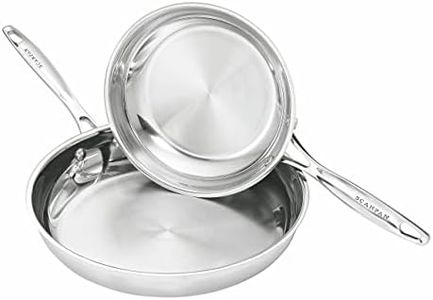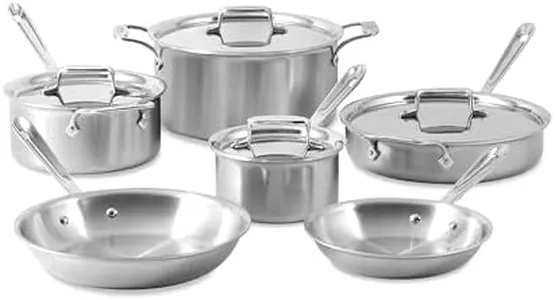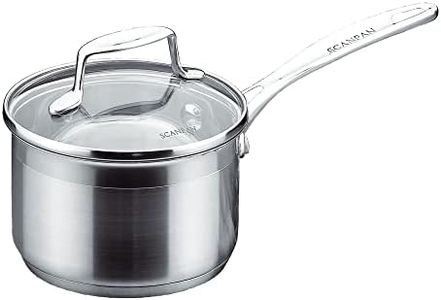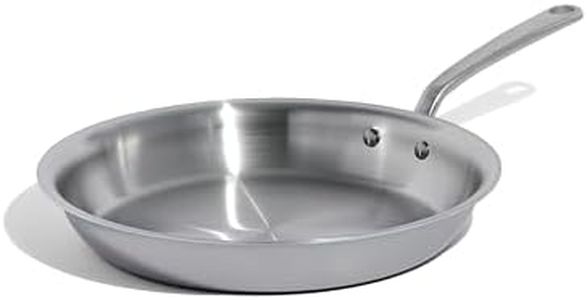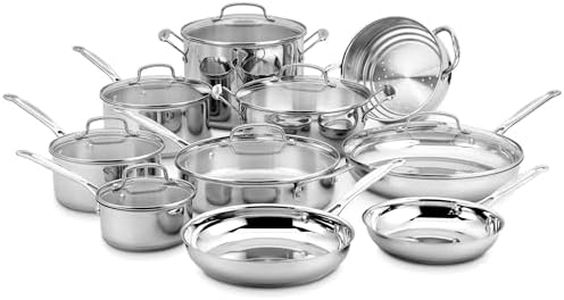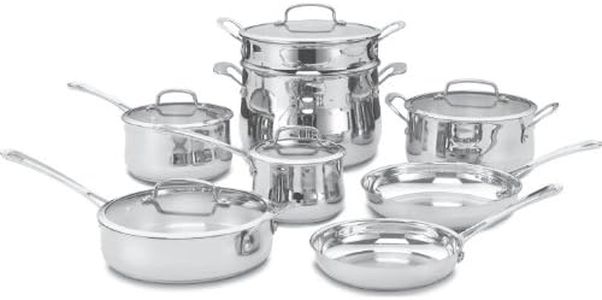We Use CookiesWe use cookies to enhance the security, performance,
functionality and for analytical and promotional activities. By continuing to browse this site you
are agreeing to our privacy policy
10 Best Stainless Cookwares
From leading brands and best sellers available on the web.Buying Guide for the Best Stainless Cookwares
When choosing stainless cookware, it's important to focus on durability, ease of use, and how well it fits your cooking habits. Stainless steel is popular for its resistance to rust, ease of cleaning, and ability to handle a variety of cooking tasks. The right pieces can last a lifetime if you make choices based on your cooking style, the types of food you prepare, and how much maintenance you want to do.Material CompositionMaterial composition refers to the different metals that make up the stainless steel cookware. Most good quality cookware uses a blend called '18/10 stainless steel', which means 18% chromium and 10% nickel. This blend is significant because chromium adds rust resistance while nickel gives a shiny finish and improves durability. Cookware with higher numbers is more resistant to corrosion. If you want cookware that stays pretty and rust-free for years, look for 18/10 or similar blends. If day-to-day durability is your main concern and you won’t mind a little dullness, slightly lower numbers (like 18/8) are also reliable.
Number of Layers (Ply Construction)Ply construction refers to how many layers of metal are sandwiched together in the cookware. Tri-ply (3 layers) is common, with stainless steel on the outside and aluminum or copper in the middle for better heat distribution. More layers (like 5-ply) mean even heat and fewer hot spots, which is great for complex recipes or sensitive foods. If you often cook foods that burn easily or need even heat, go for cookware with more layers. If you mainly boil, steam, or make simple dishes, fewer layers are usually just fine.
Handle Design and AttachmentThe handle design affects comfort, safety, and durability. Handles that are riveted (attached with metal rivets) are stronger and last longer, but may require extra cleaning around the rivets. Welded handles (no rivets) look neat and are easier to clean, but may be less sturdy over time. Consider how heavy the cookware will be for you to lift, if you want oven-safe handles, or if you have a preference for grip style. Choose based on your typical use: if you like to finish dishes in the oven, or often move pans from stove to table, solid, heat-resistant handles are key.
Lid Material and FitLids come in stainless steel or glass. Steel lids are more durable and oven-safe at higher temperatures, while glass lids let you see your food without lifting the lid, but can break if dropped. The fit matters because a tight lid traps steam, making it ideal for simmering or slow-cooking. If you like to monitor your cooking visually, glass lids may be helpful. For more intense cooking or oven use, stick to stainless steel lids. Make sure the lids fit snugly to prevent energy loss and ensure even cooking.
Compatibility with CooktopsNot all stainless cookware works with every cooktop, especially induction stoves. Compatibility is about whether the base of the pan contains magnetic material, which is needed for induction. Most modern sets are induction-compatible, but some lighter-weight or cheap pans may not be. If you use an induction cooktop or plan to in the future, double-check for this compatibility. For gas or electric, nearly all stainless cookware will work fine.
Weight and BalanceWeight refers to how heavy the cookware feels in your hand, while balance means how evenly its weight is distributed. Heavier cookware generally means thicker metal, which can provide more even cooking and prevent warping, but it can be tough to handle for some people. Try to lift and handle different options if you can: choose cookware that feels steady but not too heavy for your typical use, especially if you do a lot of tossing or pouring.
Ease of CleaningEase of cleaning depends on the finish inside the cookware and the construction of handles and rims. Mirror finishes look shiny but may show scratches, while brushed finishes hide wear well. Some pans are dishwasher-safe, making cleanup easier, while others need hand washing to preserve their finish. If you like low-fuss cleanup, look for dishwasher-safe options and avoid cookware with a lot of little nooks that trap food.
